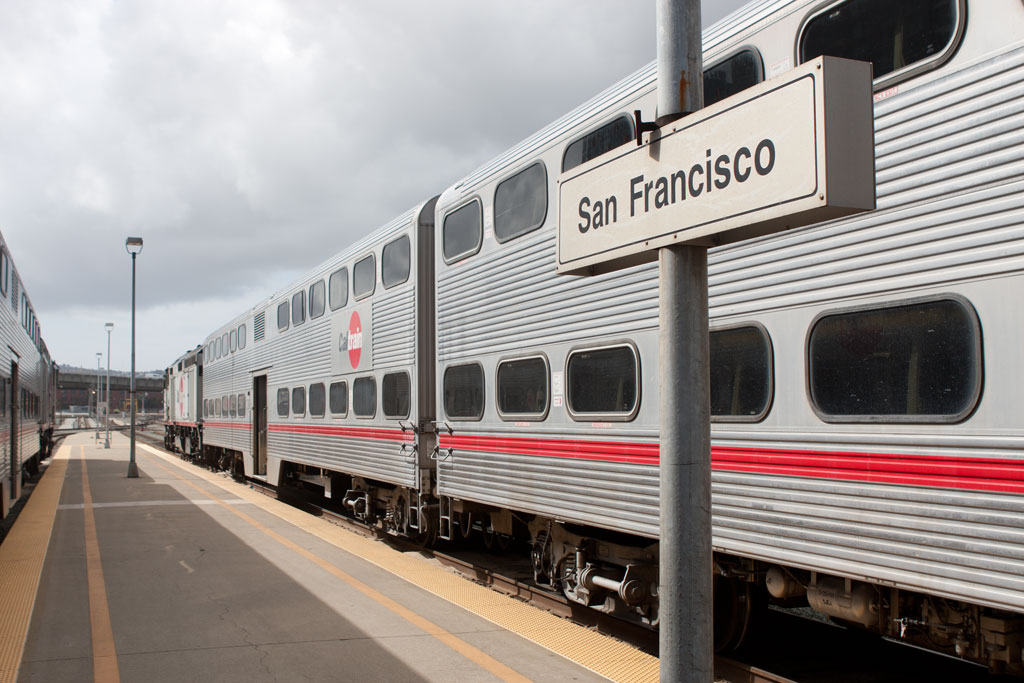Caltrain spokeswoman Jayme Ackemann said passengers were getting off a northbound train stopped at the South San Francisco station and walking across the southbound tracks to reach a parking lot at 8:25 a.m., during the morning commute period. An express train that was not scheduled to stop at the station came down the southbound tracks at 76 mph. The engineer put the train into emergency, but it didn’t stop until it had passed through the station. The station does not have a gate or crossing arms that come down to prevent passengers from crossing active tracks. Engineers usually radio each other or use headlight signals to ensure the station is clear before an express train passes through the station, but that apparently didn’t happen this time.
“There were some passengers that needed to move quickly to get out of the way of the oncoming train,” Ackemann said. “And I’m sure that there were some passengers, regardless of where they were, who witnessed this and were extremely frightened by the incident.”
Caltrain has launched an internal investigation and hasn’t determined the cause of the incident. But the engineer operating the train stopped at the station has tested positive for marijuana use, Ackemann said. She would not name the engineers of either train, calling it a personnel issue, but she described both operators as veterans. Both have been placed on paid leave, a standard protocol for such incidents. They could face discipline or be fired depending on the outcome of the investigation.
In response, Caltrain this month instituted new rules requiring engineers and dispatchers to communicate before entering the four stations like South San Francisco that do not have crossing arms to prevent passengers from entering live tracks. The other affected stations are Atherton, Broadway in Burlingame, and College Park in San Jose.
“We want to make sure that this kind of thing never ever happens again,” said Ackemann, who added that conductors of the stopped train moved quickly to prevent more passengers from getting off once they saw the express train coming.
Ackemann said officials disclosed the incident during last week’s board meeting and to federal rail officials but had not reported it to the general public or media before confirming the details to the Daily News on Sept. 14. Caltrain typically publicizes fatalities on its tracks and other incidents that cause delays, but felt it wasn’t necessary to advertise last month’s incident because it did not disrupt operations and no one was injured, she said.
The agency has also apologized and reached out to the passengers who had to quickly get out of the way of the train. Though it’s unclear how many were on the ground at the time, but both trains were carrying close to their 600-passenger capacity.














